Flamingos are widely known worldwide, but where do they live? Many have seen them at a zoo or on TV, but never in the countries and regions where wild flamingos live. These majestic, pink, wading birds can be found in many countries worldwide, mainly because there are six flamingo species.
Four species can be found throughout the Americas, whereas the other two are spread across Africa, Asia, and Europe. So, let’s look closer at where you can find them and what environments flamingos live in.
#1: Peru
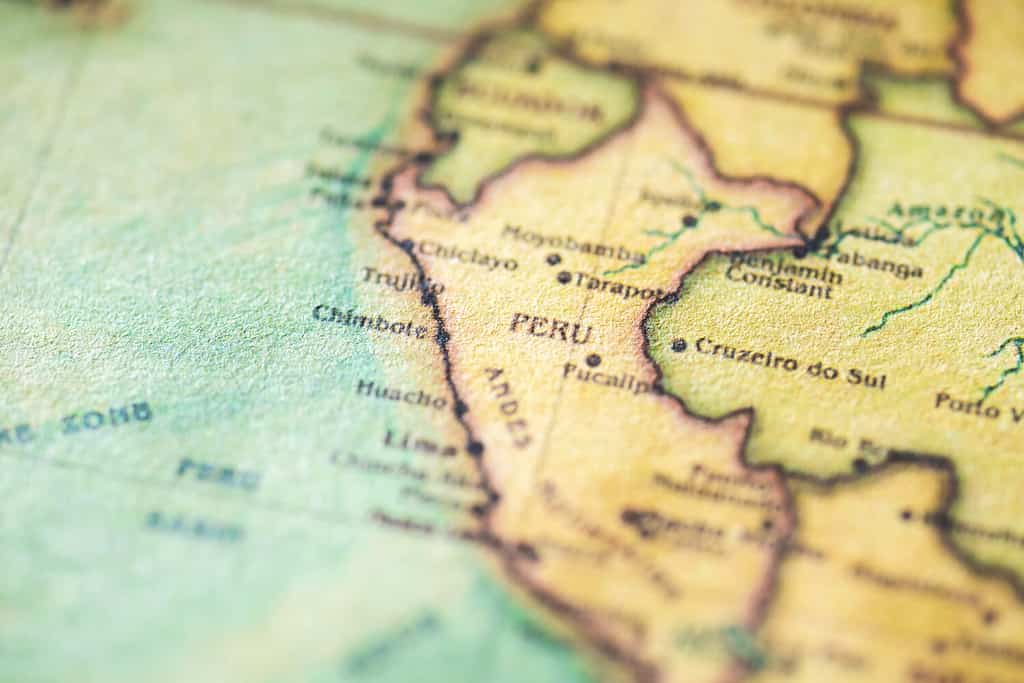
Andean and Chilean flamingos can be found across the Andean plateaus.
©passkphoto/Shutterstock.com
Two species of flamingos can be found in Peru, the Andean flamingo and Chilean flamingo. The most commonly found flamingo in Peru is the Chilean flamingo, which can be found at high elevations and coastal wetlands. They tend to be found in shallow brackish saltwater lakes, coastal estuaries, or lagoons. Geographically, they can be found in central Peru and on the south side of the Andes to Tierra del Fuego.
On the other hand, Andean flamingos can be found in the high Andean plateaus or Lake Salinas. These locations are at the southwest tip of Peru and span into Chile, Bolivia, and Argentina. The Andean flamingo thrives in wetlands and high altitudes, which makes the Andes mountain range a favorite.
#2: Argentina

The Andean Mountains span into Argentina and are home to Andean flamingos.
©iStock.com/daboost
While rare, the Andean flamingo can be found in Argentina in the wild. They are native to the wetland areas, specifically the Andes mountain range from southern Peru and northwestern Argentina. Due to the countries’ proximity, the Andean flamingo can be found in the regions that border these countries.
The Andean flamingo can be found in the Andean Mountains and wanders the Andean mountain range. Specifically, the Andean flamingo can be found in summer when congregating in the Andean highlands to feed in the region’s lakes. This includes the Reserva Laguna Nimez in Calafate, Santa Cruz Province, and the Monumento Natural Laguna de los Pozeulos. In central Argentina, you can find flamingos in the Province of Cordoba.
#3: Chile
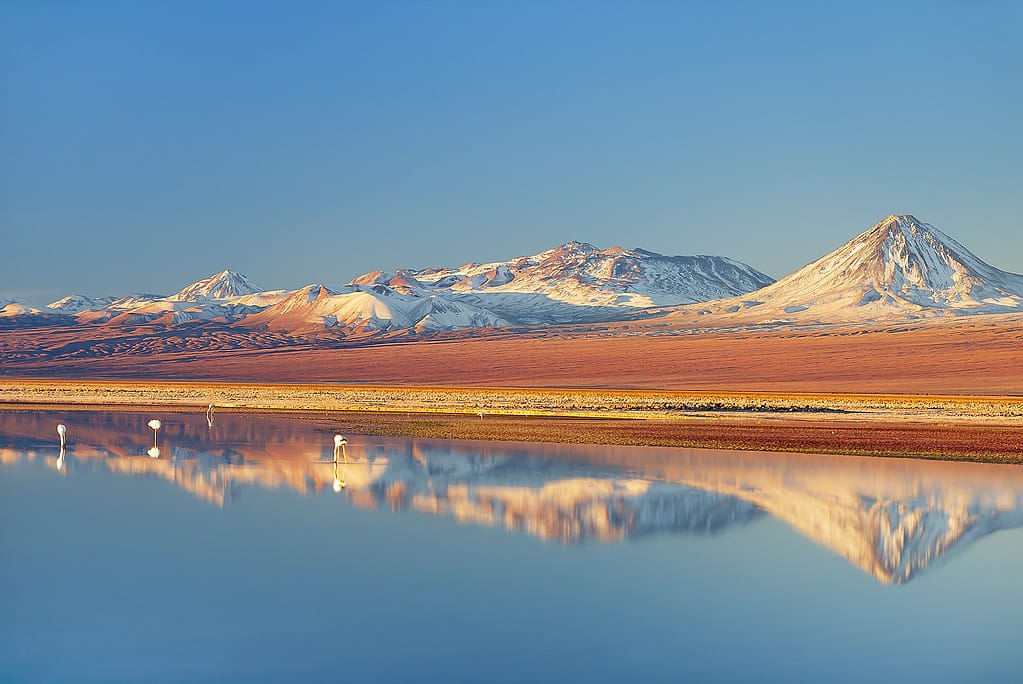
Salt Lagoons are a popular place for flamingos to flock to in Chile.
©longtaildog/iStock via Getty Images
By now, you’ve probably guessed that you can also find wild flamingos in Chile. The most notorious are the Chilean Flamingo, James’s flamingo, and Andean flamingo. The most notorious place where Chilean flamingos live in Chile is the Atacama Desert. Flamingos thrive in temperate weather, alkaline lakes, and muddy brackish. The Atacama Desert has abundant living conditions for the Chilean flamingo and the Reserva Nacional Los Flamencos.
James’s flamingos, or the Puna flamingo, can be found in the Atacama Desert in Chile. The James’s flamingo tends to live in salt lakes and bogs in the Andes mountains. Popular destinations with the Puna flamingo include Chaxa Lagoon, Salar de Pujsa, Las Veggas de Quepiaco, and the Los Flamencos National Reserve.
Lastly, the Andean flamingos can be found in north-central Chile. This includes their primary habitat, the Andean Mountains, in South America. The Andean flamingo prefers to live in highland salt lakes with sparse vegetation. They then migrate to lower wetlands when it reaches the winter season.
#4: Uruguay

Lagoons can be found throughout Uruguay and are a popular nesting place for flamingos.
©iStock.com/Oleksii Liskonih
Two types of flamingos in the wild in Uruguay are the Chilean flamingo and the Andean flamingo. The Chilean flamingo can be found in Arroyo Maldonado, the Rocha Lagoon, and the Castillos Lagoon. On the other hand, Andean flamingos can be found in the Laguna de Jose Ignacio, Arroyo Maldonado, Rocha Lagoon, and Castillos Lagoon.
#5: Paraguay
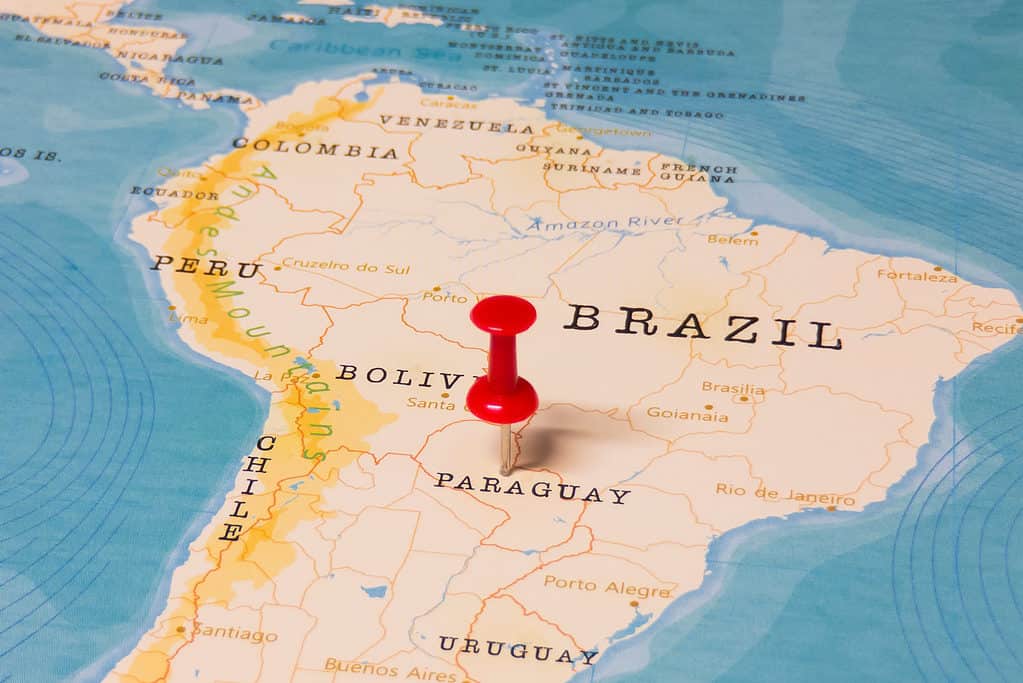
Paraguay is known for its saline lagoons and often has better temperatures for flamingos during the winter.
©hyotographics/Shutterstock.com
There has only been one type of flamingo recorded in Paraguay, the Chilean flamingo. The Chilean flamingo is often found in saline lagoons, specifically the Chaco in Paraguay. However, they can only be spotted during the winter. The flamingos that come here are migrating for the winter and will leave once the seasons change.
#6: Bolivia

Laguna Colorada has three types of flamingos.
©Zarko Prusac/Shutterstock.com
Bolivia is home to three flamingo species, including the Chilean, Andean, and the James’ flamingo. One of the prominent locations where two species can be found is the Bolivian Altiplano. This area is popular amongst Andean and James’s flamingos. However, you can see all three species at Laguna Colorada. The lake’s nickname is “the Red Lake” and is said to be the blood of the gods. From December to April, you can see all three species of flamingos feeding off the shallow lakes.
#7: Brazil

The Chilean flamingo is rare in Brazil, but James’s and Andean are more common.
©Mihai_Andritoiu/Shutterstock.com
Regarding spottings, only four species have been found in Brazil. This includes the American flamingo, Chilean flamingo, James’s flamingo, and the Andean flamingo. The American flamingo is the main species that resides in Brazil. They live in northern Brazil and also inside the Los Flamencos Wildlife Sanctuary. Resident American flamingos can also be found in Amapa state, where they reproduce.
The Chilean flamingo has also been spotted in some regions of Brazil. Chilean flamingos can be found in Sao Paulo and Rio de Janeiro, but this is rare. James’s flamingos are rare and first occurred in 2005 in Acre. The James’s flamingo can be seen during winter and often won’t stay there. Lastly, the Andean can be found in Rio Grande do Sul and Santa Catarina.
#8: Falkland Islands
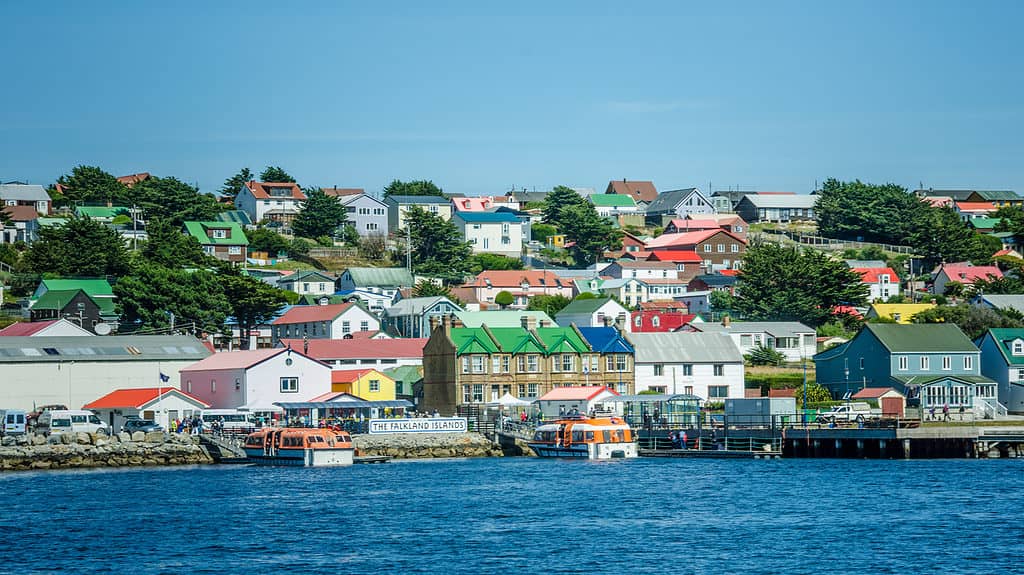
Flamingos have been a rare sight in the Falkland Islands but are now more common.
©iStock.com/LembiBuchanan
The Falkland Islands used to be home to the Chilean flamingos, but now only a few stragglers can be found. The Chilean flamingo is known to migrate, and some move to the Falkland Islands. However, reports have been made that it has been nearly 20 years since residents have actively seen Chilean flamingos roaming about the Island. There are only a few records here and there that have spotted any.
#9: Ecuador
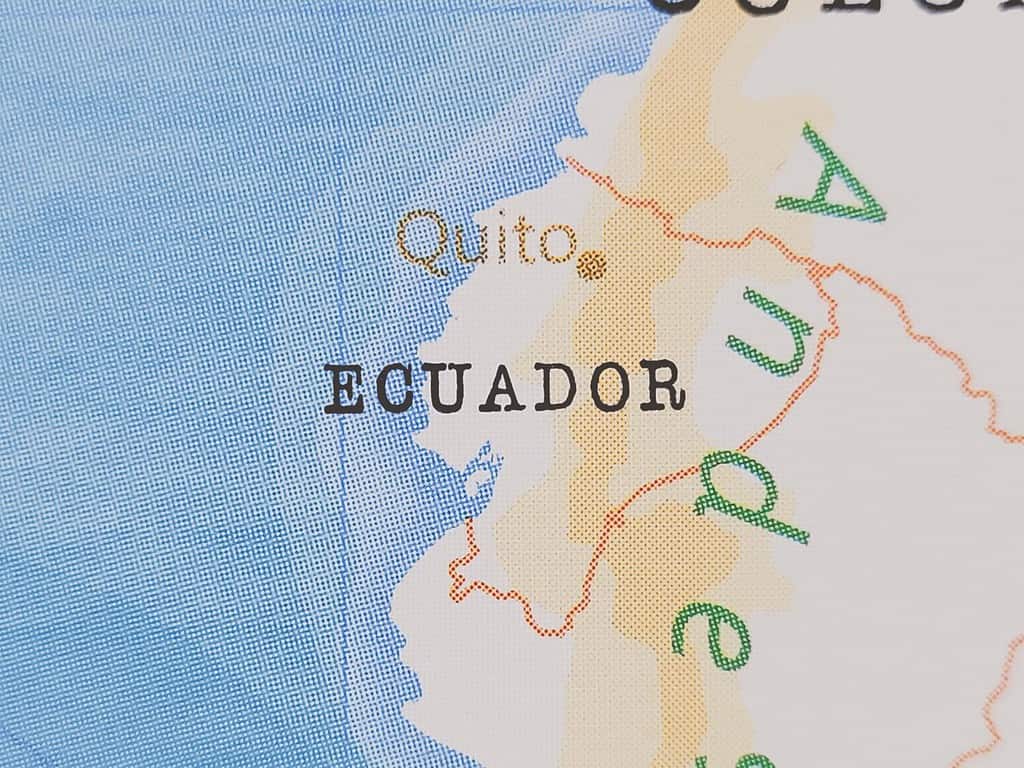
Large flamingo colonies can be found around the archipelago of Ecuador.
©hyotographics/Shutterstock.com
Ecuador is one of the places where Galapagos flamingos live in large colonies. They tend to live in brackish, shallow waters in Ecuador’s archipelago. The larger colonies tend to be seen on Floreana Island, Isabela Island, and Santiago. In addition, reports have also been made that they can be seen in Rabida Island and Santa Cruz.
Unlike other areas, the Galapagos flamingos stay here year-round due to the flourishing weather and conditions. In fact, nesting season happens from March until July, which is a sight to see.
#10: Tanzania

Pink flamingos flock to Arusha National Park, where conservation efforts are made to ensure they aren’t hunted.
©evan_huang/Shutterstock.com
Tanzania is one of the best places to see pink flamingos year-round, known as Lesser flamingos. The northern region of Tanzania, specifically Lake Natron, is the world’s largest pink flamingo breeding ground. Another popular location is Rify Valley, as it has many soda lakes popular amongst migratory birds.
Other locations are spread across Arusha National Park, such as Momella Lakes, Lake Manyara, and Lake Magadi. Aside from Lake Natron, the Ngorongoro Crater location is home to plenty of Lesser flamingos. The flamingos are smaller in size and have flocks of over 1,000.
#11: India

Greater flamingos flock to the coastal regions of India and other Middle Eastern countries.
©Roxane 134/Shutterstock.com
Another place that has plenty of flamingos is India. India is famous for its Greater flamingos, protected in the Nal Sarovar Bird Sanctuary or Khjadiya Bird Sanctuary. In addition, the country also is home to many lesser flamingos. They are mainly found in areas that have salt deserts but can include Flamingo City, Thol Bird Sanctuary, and Yashwant Sagar Reservoir.
Aside from these key places, flamingos can be found spread throughout India. This includes areas such as Maharashtra, Gujarat, Mumbai, and Odisha.
#12: Spain
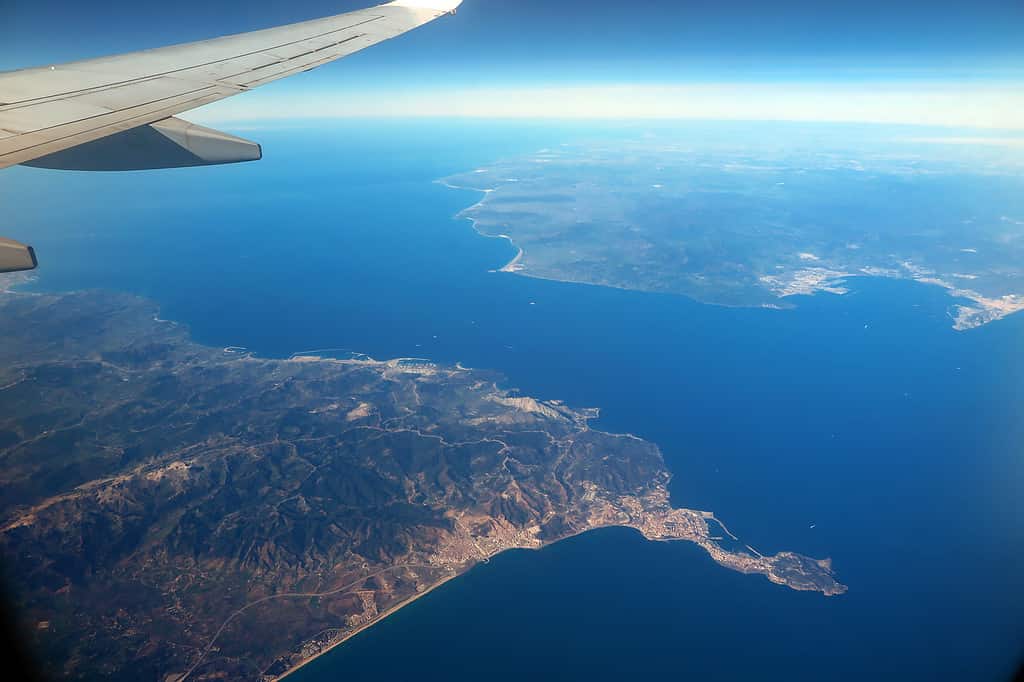
While rare, flamingos can be seen in coastal regions of the country and around lagoons.
©Raphael Comber/iStock via Getty Images
While Spain doesn’t have that many flamingos year-round, the country is famous for migratory birds between January and February. Pink and common flamingos can be found across Spain, specifically in the lagoon Laguna de Fuente de Piedra. The lagoon is the largest one in Andalusia and is protected by the government.
#13: Caribbean
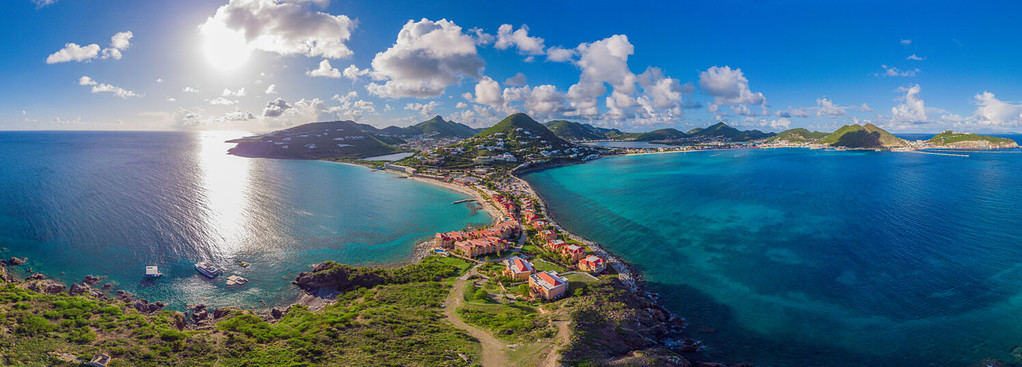
American and Caribbean flamingos tend to flock to many of the islands during the summer months to reproduce.
©Multiverse/Shutterstock.com
The Caribbean has American flamingos and plenty of places to spot them. The best places include the Flamingo Pond and Pumpkin Bluff Pond on the North Caicos. In addition, Haulover Pond on Middle Caicos and Lake Catherine on West Caicos are also popular places. Visitors can also swim with the Flamingos on Bonaire Island.
#14: United States
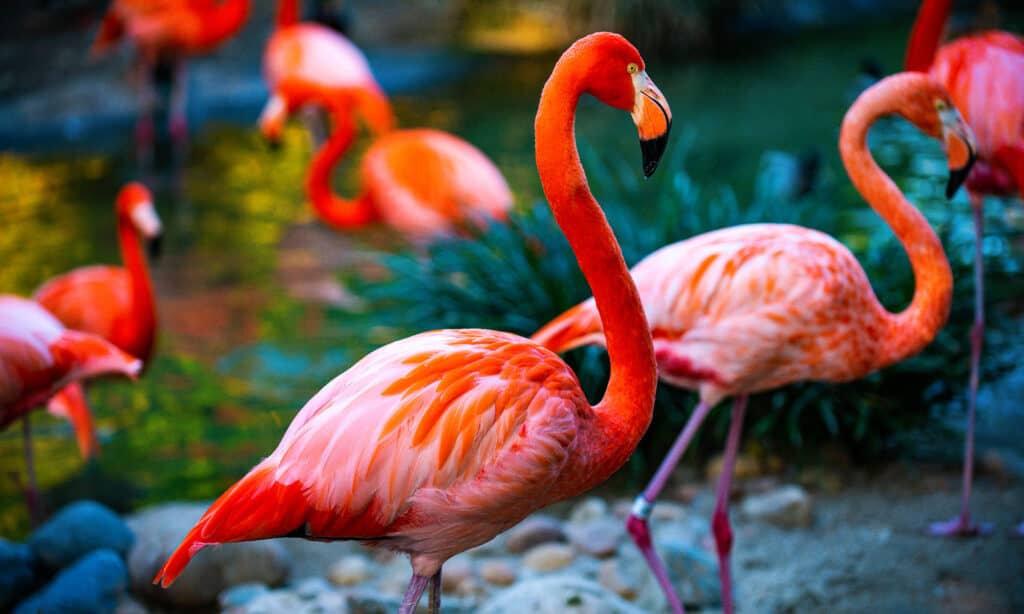
The coast of Florida tends to see many American flamingos, especially in areas that touch the Gulf of Mexico.
©Volodymyr TVERDOKHLIB/Shutterstock.com
Believe it or not, flamingos are native to Florida! The most observed species is the American Flamingos. The species can be found along Florida’s southern coastal regions. These include Florida Bay, The Florida Keys, The Everglades, and Biscayne Bay.
#15: Mexico
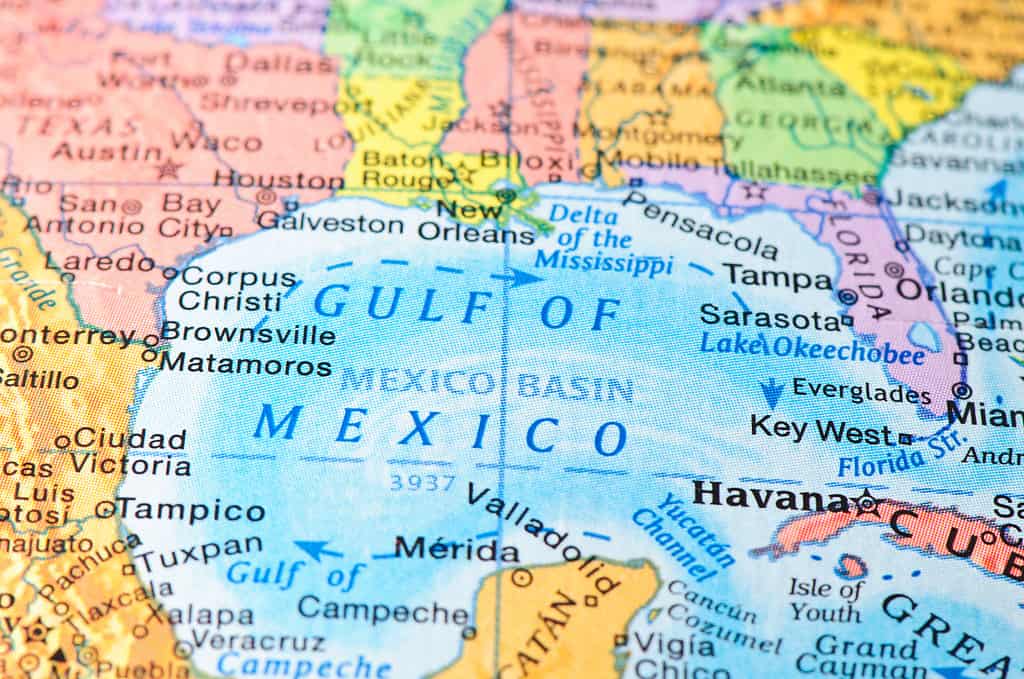
Mexico’s coastal regions are a central migratory area for American flamingos.
©Tomasz Raczek/iStock via Getty Images
Mexico is also home to the American flamingo. While the name is deceptive, American flamingos are native to Mexico. They can be found in a few places around the country. Two places flamingos reside are the Celestun Biosphere Reserve, which is located near Merida. Mainly, American flamingos can be found on the Yucatan Peninsula in Mexico.
#16: Trinidad and Tobago
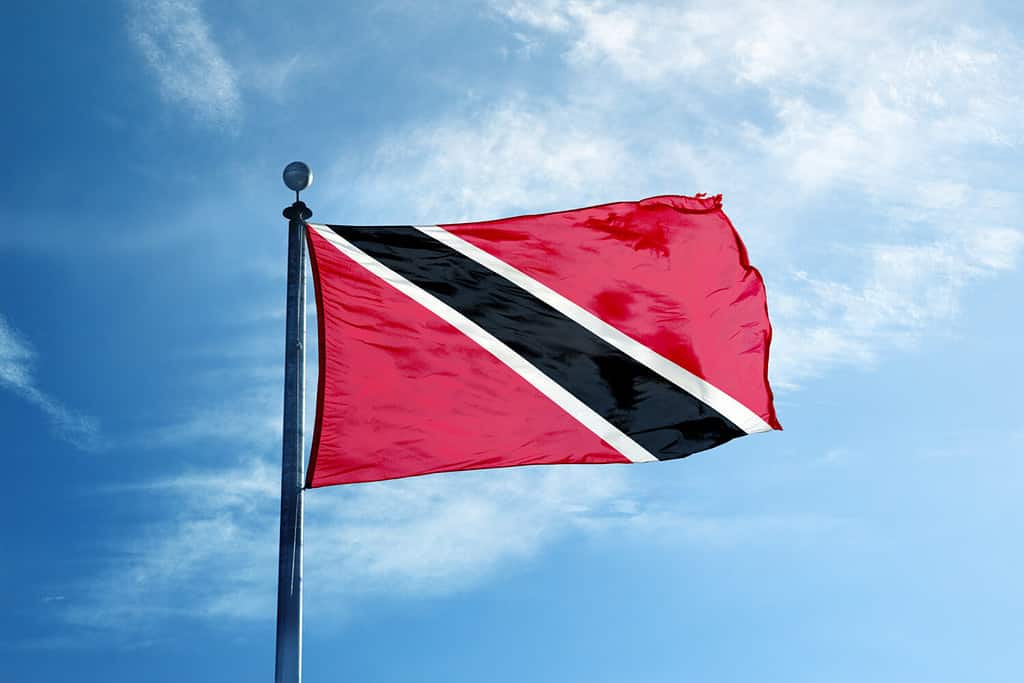
American flamingos are a newer addition to the Trinidad and Tobago lands.
©Creative Photo Corner/Shutterstock.com
Trinidad and Tobago recently have seen an influx of migrating American flamingos. Usually, there were only Scarlet Ibis birds that looked similar to flamingos. However, the American flamingo can be found in the wetlands of Trinidad. Specifically, they have been found nesting in The Caroni Swamp, a colony of 200 American flamingos.
#17: Cuba

Part of the Caribbean Islands, Cuba is one of the most popular places for Caribbean flamingos year-round.
©Victor Maschek/Shutterstock.com
Cuba, located in the Caribbean Islands, is also home to the Caribbean flamingos, with more than 70,000 nesting there. In fact, it’s one of the largest colonies of Caribbean flamingos in the Western Hemisphere. Many of the flamingos tend to live in the wildlife refuge known as Laguna Guanaroca. Two other places known to have flamingos are The Maximo River Wildlife Sanctuary and The Guanaroca Salt Lake.
#18: Jamaica
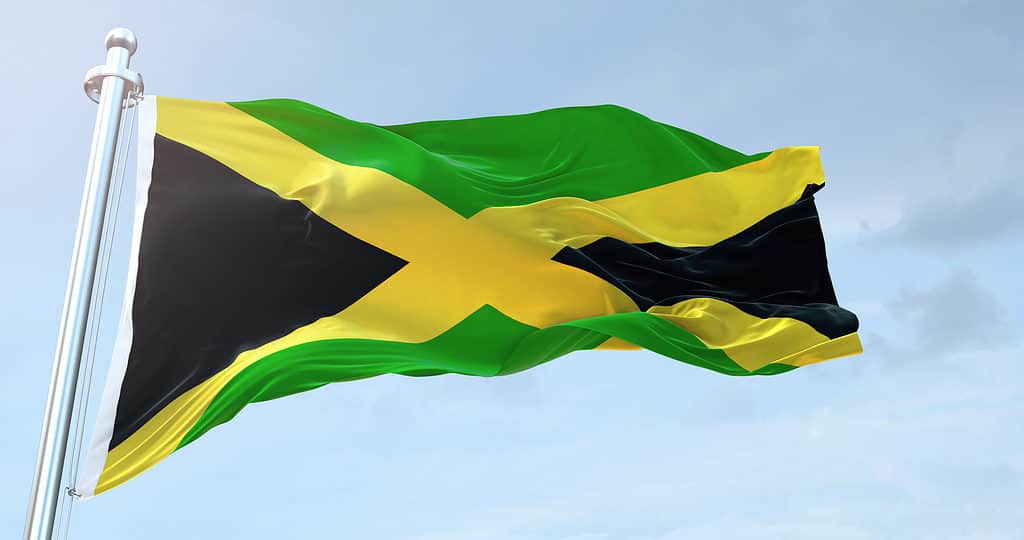
Jamaica sees fewer flamingos than other Islands, except for one location called Portland Cottage.
©iStock.com/EA
Jamaica, part of the Caribbean Islands, has a wealth of Caribbean flamingos. They are mainly seen at Portland Cottage and inhabit small wetlands across the island. The flamingos only live here for a few months before migrating to the north.
#19: Hispaniola

Hispaniola is the Dominican Republic and Haiti. They only see a handful of flamingos migrating for the summer.
©N. Vector Design/Shutterstock.com
Hispaniola is also a common location for migrating Caribbean flamingos. They tend to live in the shallows of the saltwater brackish and alkaline lakes. The Caribbean flamingos are mainly found in Monte Cristi, Manzanillo Bay, and the Laguna Saladilla. The populations are spread across the Island and migrate away during the winter.
#20: The Bahamas
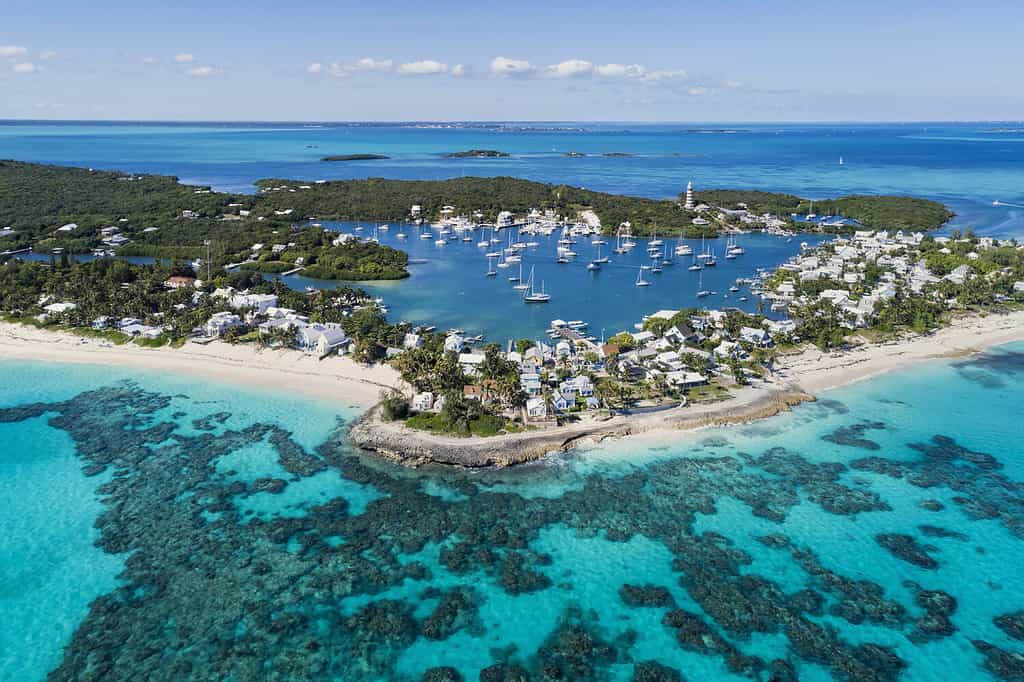
The Caribbean flamingo is the country’s national bird.
©pics721/Shutterstock.com
The flamingo is The Bahama’s national bird, and the most common is the Caribbean flamingo. There are nearly 50,000 birds in the Inagua wilderness, mainly flamingos. However, aside from wild flamingos, many reservations have domesticated flamingos. This includes the famous Ardastra Gardens and Wildlife Conservation Centre, which has trained marching flamingos.
#21: The Virgin Islands
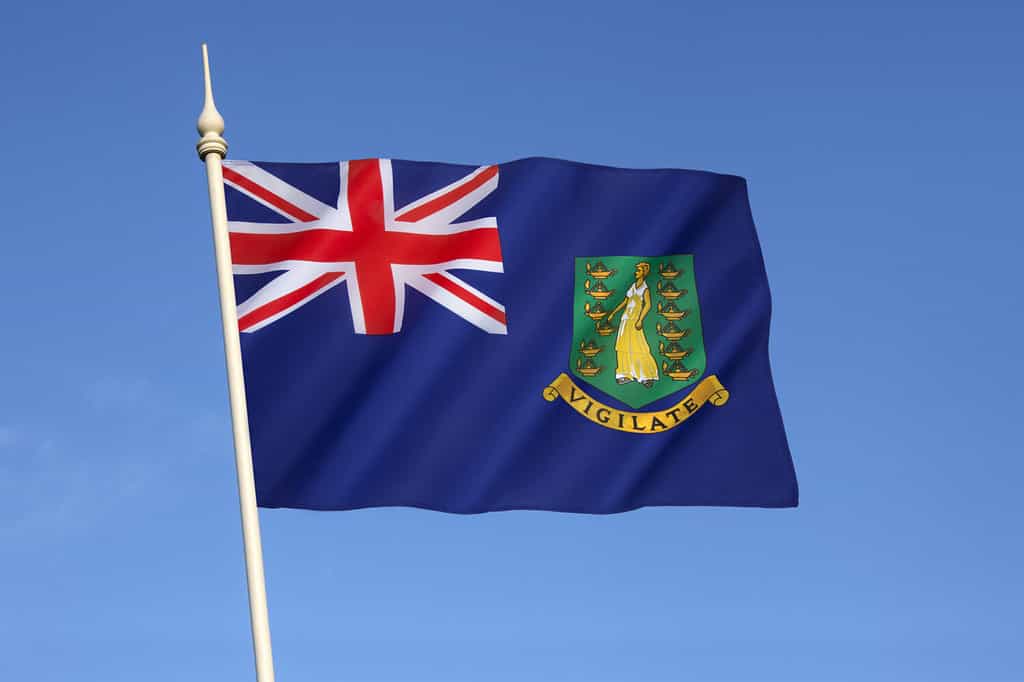
Poachers were abundant in The Virgin Islands and have led to low populations of flamingos.
©Steve Allen/Shutterstock.com
The Virgin Islands used to have an abundant flock of flamingos, but the species has been hunted across the islands. Due to the hunting, the flamingos that visit this Island have become sparse. There has recently been a return of flamingos to the Island, specifically Caribbean flamingos. They are still a rare sight.
#22: Turks and Caicos Islands
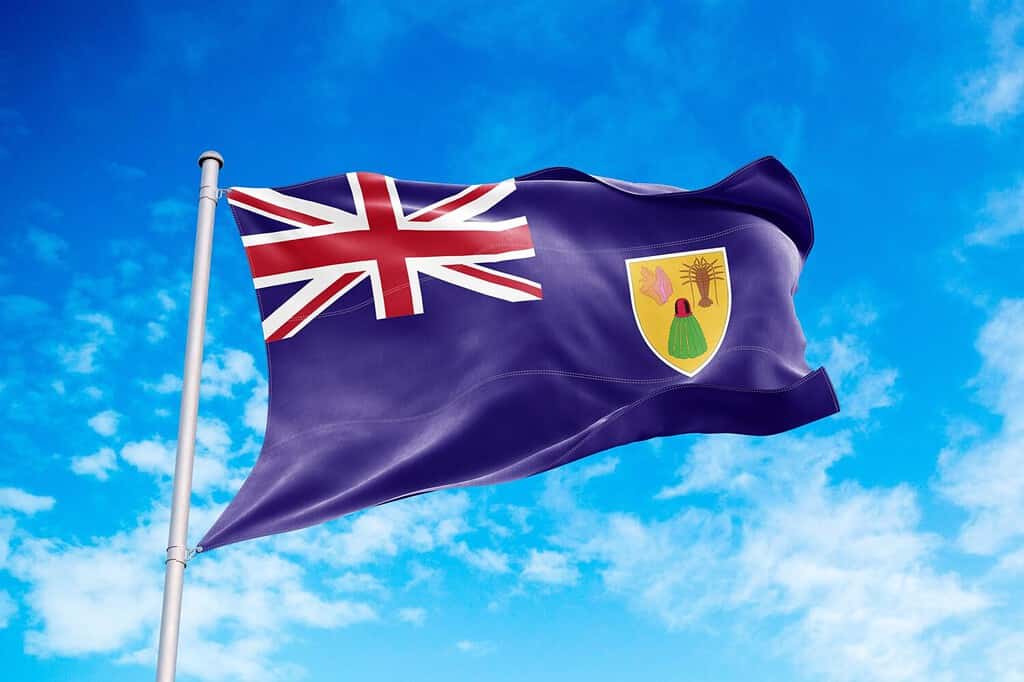
The Turks and Caicos Islands are a migration area for flamingos during the spring months.
©zmotions/Shutterstock.com
The tidal mangrove channels are between East Caicos and South Caicos and have the best flamingo watching in the country. Many migrating flamingos tend to move through this area. The main three areas are the Providenciales, North Caicos, and South Caicos.
#23: Northern Africa

The North Africa region has plenty of Greater flamingos that live year-round.
©Ondrej Prosicky/Shutterstock.com
Parts of North Africa house the Greater flamingo. This can include the coastal areas of Egypt, Algeria, and Libya. In addition, the Greater Flamingo can also be found nesting along the Nile River, Morocco, and Tunisia.
#24: Sub-Saharan Africa
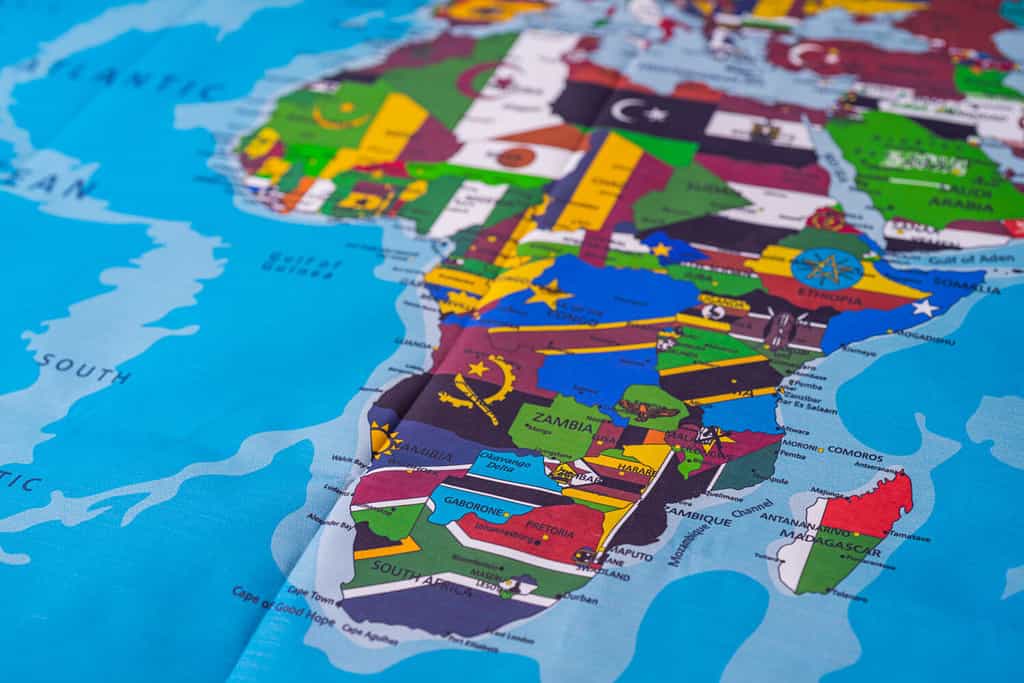
Both the Greater and Lesser flamingo are commonly seen in Sub-Saharan Africa.
©Alexander Lukatskiy/Shutterstock.com
The Sub-Saharan African countries have also seen Greater flamingo flocks. They can mainly be found in Kenya, Madagascar, and Rwanda. They also have been spotted in Tanzania and Uganda.
#25: Southern Asia

The coastal areas of Southern Asia tend to attract both Greater and Lesser flamingos.
© – License
Certain countries located in Southern Asia also see Greater and Lesser flamingos. This can include the coastal areas of Bangladesh, Pakistan, and Sri Lanka. The flamingos often don’t live here and are migratory.
#26: Middle East
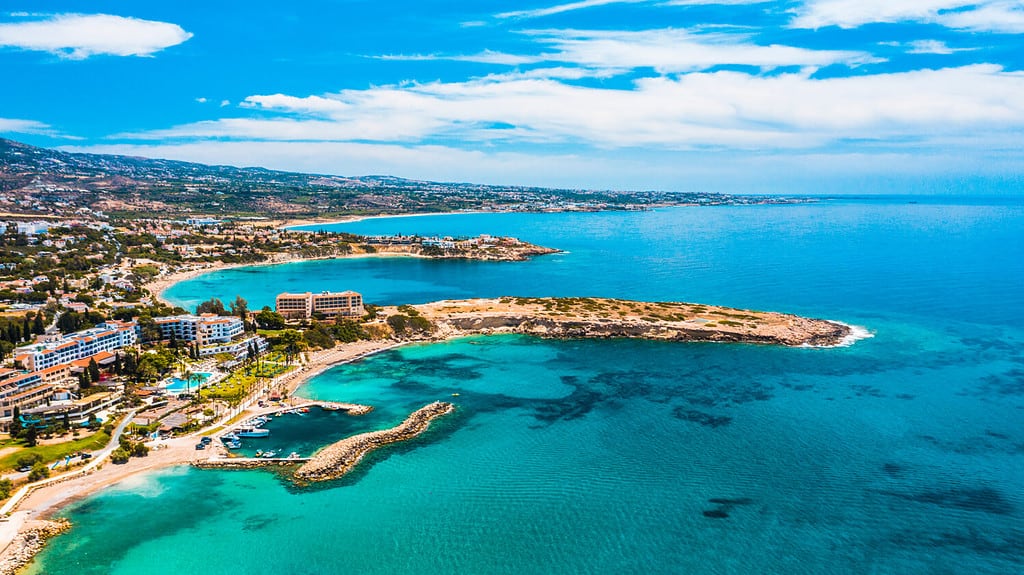
The Greater Flamingo can be seen living in coastal areas in the Middle East.
©Sabina Berezina/Shutterstock.com
Areas in the Middle East such as Cyprus, Iraq, Iran, Israel, Kuwait, and Lebanon have also seen activity with Greater flamingos. Countries such as Qatar, Bahrain, and the United Arab Emirates report that Greater flamingos have been sighted.
#27: Southern Europe

Limited numbers of Greater flamingos can be seen traveling across European countries. This is mainly due to the changing climate.
©Andrew Mayovskyy/Shutterstock.com
Places in Europe also have populations of Greater flamingos. This can include countries such as Albania, Bulgaria, Corsica, and Croatia. Countries such as France, Greece, and Italy also have small populations. Reports have also been made from Slovenia, Malta, Monaco, Montenegro, and Macedonia. Lastly, Spain, the Balearic Islands, and Turkey have reported flamingo populations.
Summary of the 27 Countries and Regions Where Wild Flamingos Live
| Rank | Location | Flamingo Species |
|---|---|---|
| #1 | Peru | Andean, Chilean |
| #2 | Argentina | Andean |
| #3 | Chile | Chilean, James’s, Andean |
| #4 | Uruguay | Chilean, Andean |
| #5 | Paraguay | Chilean |
| #6 | Bolivia | Chilean, Andean, James’s |
| #7 | Brazil | American, Chilean, James’s, Andean |
| #8 | Falkland Islands | Chilean |
| #9 | Ecuador | Galapagos |
| #10 | Tanzania | Lesser, Pink |
| #11 | India | Greater |
| #12 | Spain | Pink |
| #13 | Caribbean | American |
| #14 | United States | American |
| #15 | Mexico | American |
| #16 | Trinidad and Tobago | American |
| #17 | Cuba | American, Caribbean |
| #18 | Jamaica | Caribbean |
| #19 | Hispaniola | American |
| #20 | The Bahamas | Caribbean |
| #21 | The Virgin Islands | Caribbean |
| #22 | Turks and Caicos Islands | Greater |
| #23 | Northern Africa | Lesser, Greater |
| #24 | Sub-Saharan Africa | Lesser, Greater |
| #25 | Southern Asia | Greater |
| #26 | Middle East | Greater |
| #27 | Southern Europe | Lesser, Greater |
The photo featured at the top of this post is © Dr Ajay Kumar Singh/Shutterstock.com
Thank you for reading! Have some feedback for us? Contact the AZ Animals editorial team.







